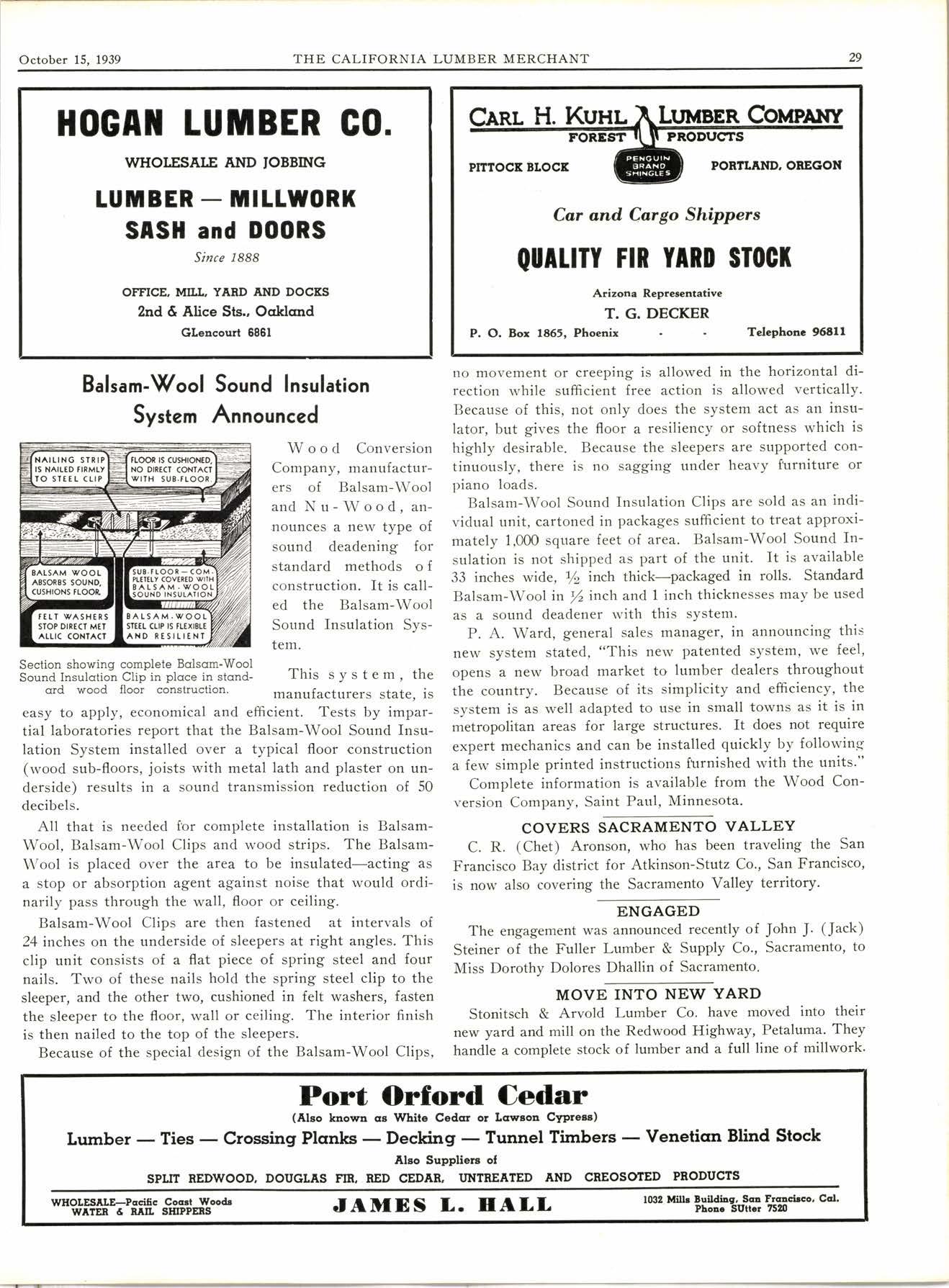
2 minute read
MARIS PTYWOOD GORPORATION Modern "Wich Stand" at Los Angeles
Not so long ago they resembled everything from a steamheated igloo to a glorified doghouse. Writing about modern Wayside Inns and roadside "restaurants," a noted writer who has probably traveled m,ore in his imagination than his car, in recent years said that "Americans have a genius ['or constructing highway shacks and monstrosities which is exceeded only by their mania for giving them names such as Stumble Inn and the Hick Up."
But such caustic comment would have been more justi' fied in the late '20's and the early '30's than it is today. Slowly but definitely the national campaign for roadside beautification, with emphasis on the elimination of "shacks and monstrosities," has been bearing fruit. Retail lumber dealers, under the professional guidance of architects and with the sort of cooperation from contractors that made for enduring progress, have done a fine job in creating designs and methods of construction which enable the owners of drive-in stands and other places of business By the Way to have unique quarters-like the California "Wich Stand" pictured here-and still have something architecturally sound and attractive.
It is worthy of comment that, due to its unique versatility, wood is coming more and more back into the picture as the material par excellence in this rapidly expanding campaign for beautification and rehabilitation along the routes where the World and His Wift roll by.

In Southern California the construction of novel and convenient stands, particularly of the drive-in variety, is an industry of no small pr,oportions. The Los Angeles DriveIn Wich Stand pictured here, with its very pleasing appearance and its "handy roundl design, enabling service to capacity crowds without inconvenience, is not only a vast improvement over the various types of stands built several years ago; it is a 1939 answer to the widespread demand for more artistry and less artificiality.
The outer rafters are tapered so as to provide an appear' ance of trimness at the ouside of the completed building. The cove consists of band-sawed pieces and the remainder is typical construction-that is, with commercial boards and dimension. All framing is of Pacific Northwest Douglas fir. The vertical sign at the top of the building is both wood ancl metal. There is, indeed, a witchery about this ultra-modern stand that is not all found in sandWlCHes.
H. B. HEWES BACK FROM EUROPE
H. B. Ilewes, nationally known lumberman of Jeanerette, La., and San Francisco, recently arrived in San Francisco after having spent the last several months in Europe.
Mr. Hewes motored a distance of more than 5,000 miles in France, I'taly, Germany, Holland and England in company with his son, Clarence B. Hewes, who has been for many years in various European countries in the United States diplomatic service. They were in Germany when that country invaded Poland and just got across the frontier the day it was closed.
The Atlantic crossing was made by Mr. Hewes in a British ship at the time when many ships were being torpedoed.
DEPEN
WHOLESALERS OF DOUGLAS FIR REDWOOD PONOEROSA AND SUGAR PINE CEDAR PRODUCTS POLES & PILING WOLMANIZED AND CREOSOTED LUMBER
This new bocrrd moves in c hcrll circle. lust swing it cround to where it ccm be used. Ironing done-put the hot iron in iron receptncle, Iold up bocrd crrd close ccrbinet. It's lireprool. Hot iron rest cmd sleeve bocrrd included. Ccbinet is ccrsed cnd door hung. Fits crny 2"x4", 16" center wcll. Good mcrgin ol prolit. A phone ccrll or post ccrd will bring lull pcrticulcrrs.
Sold through dealers only.










